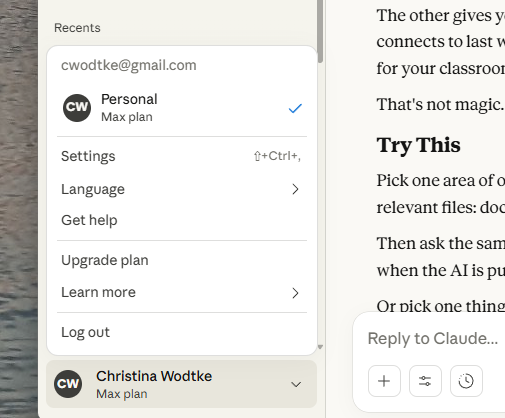When (and When Not) to Use AI in Digital Product Development
In Co-Intelligence, Ethan Mollick points out that we often turn to AI for a first draft to escape the pressure of the blank page—but that usually results in the worst of AI: generic, boring, and unoriginal. But the real danger of that approach? We look at it and think, Well, good enough. And we let that uninsightful, uninspired work stand.
If we want to create work that’s actually good—maybe even better than what we’d make without AI—we have to be active participants. That means starting with our own ideas, no matter how messy or half-formed, and using AI as a thought partner, not a replacement. This is especially true in product development, where deep thinking and real expertise make the difference between a great product and a forgettable one.
AI Won’t Make You Smarter. Engaging With Data Will.
A big part of product work is training your brain to recognize patterns, spot inconsistencies, and make better decisions. You don’t build those instincts by passively consuming AI summaries—you build them by working directly with user research, feedback, and product data.
When you engage with raw data yourself, you:
 Develop an intuitive understanding of user needs.
Develop an intuitive understanding of user needs.
 Spot gaps, contradictions, and nuances AI might miss.
Spot gaps, contradictions, and nuances AI might miss.
 Get faster at assessing ideas in meetings and strategy discussions.
Get faster at assessing ideas in meetings and strategy discussions.
Example: Making Better Product Decisions
Imagine you’re defining the next version of your product. If you’ve spent time deep in user research, those insights live in your memory. You’ll move faster—assessing trade-offs, prioritizing features, and pushing back on flawed assumptions.
But if you’ve only skimmed an AI-generated summary? You won’t have internalized the insights. Your decisions will be weaker, your ability to think on the fly slower, and your long-term product instincts duller.
AI as a Thought Partner: Generating vs. Evaluating
AI is great for brainstorming—it can surface unexpected, even kooky ideas. But AI doesn’t understand your market, your users, or your strategy. That’s your job.
Example: Evaluating Product Ideas
AI might suggest a range of new features, engagement tactics, or business models. Some might be brilliant. Others? Completely impractical.
If you don’t have deep knowledge of your market and users, you won’t know which ideas have legs. Your expertise is what turns AI’s brainstorm into real innovation.
The Right Way to Use AI: Enhancing Thinking, Not Replacing It
A better workflow for product research—one that helps you develop your product instincts:
1⃣ First, engage with raw data yourself. Identify key themes manually.
2⃣ Then, let AI generate its own synthesis. Compare it with yours.
3⃣ Refine your understanding. Reconciling AI’s perspective with your own deepens your expertise.
Where AI Helps: Polishing, Not Thinking
If you’re going to outsource anything to AI, let it be polishing, not thinking.
 AI can improve grammar, clarity, and formatting. It can even come up with a clever turn of phrase.
AI can improve grammar, clarity, and formatting. It can even come up with a clever turn of phrase.
 But if you don’t review it, you’ll end up with something that looks good but lacks depth.
But if you don’t review it, you’ll end up with something that looks good but lacks depth.
There are documents nobody likes to write and nobody enjoys reading—like a PRD (product requirements document). It can be tempting to let AI write it for you. But the PRD is the blueprint for making a product the market loves, and it’s critical that you, the human with refined product instincts, ensure that the document represents the team’s decisions.
Perhaps a better use of GenAI would be to ask: How can I make this document interesting without changing the meaning and content? Polish isn’t just grammar—it’s making writing compelling.
The Key Question: Are You Still Thinking?
Whenever you use AI, ask yourself:
1⃣ Am I actively engaging with the data, or am I outsourcing my thinking?
2⃣ Is AI helping me express my insights, or is it just generating generic content?
AI should amplify your thinking, not replace it. If you want to be a sharper, more effective product leader, you have to do the thinking yourself first.
How are you using AI in your product work? Where has it been most helpful—or most harmful? Let’s discuss.


